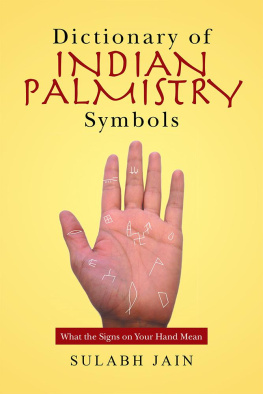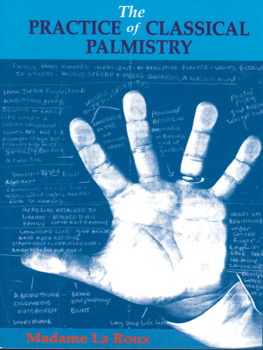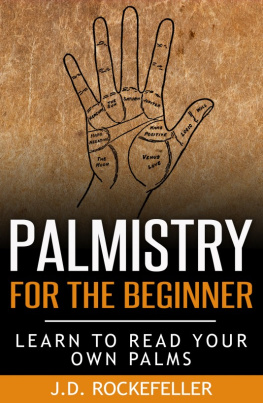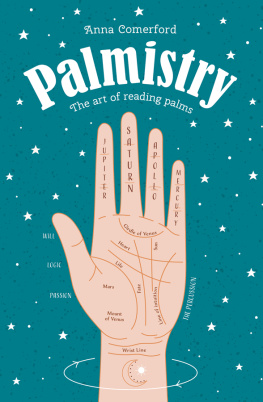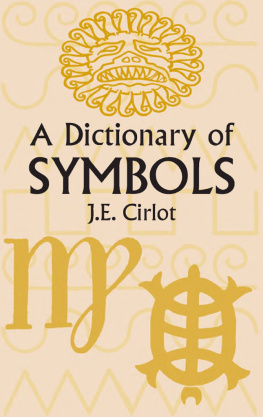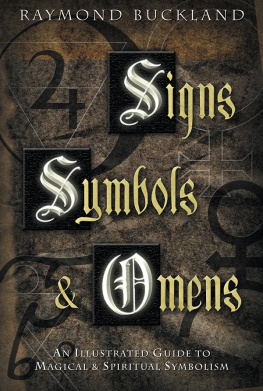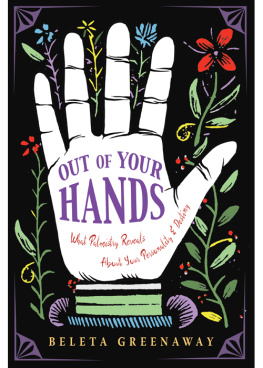Dictionary of
INDIAN
PALMISTRY
Symbols
What the Signs on Your Hand Mean
Sulabh Jain
Copyright 2017 by Sulabh Jain.
Library of Congress Control Number: | 2017902159 |
ISBN: | Hardcover | 978-1-5245-2249-0 |
Softcover | 978-1-5245-2248-3 |
eBook | 978-1-5245-2247-6 |
All rights reserved. No part of this book may be reproduced or transmitted in any form or by any means, electronic or mechanical, including photocopying, recording, or by any information storage and retrieval system, without permission in writing from the copyright owner.
Any people depicted in stock imagery provided by Thinkstock are models, and such images are being used for illustrative purposes only.
Certain stock imagery Thinkstock.
Rev. date: 02/17/2017
Xlibris
1-800-455-039
www.Xlibris.com.au
749161
Contents
To Bagwan Das Jain
My grandfather and first palmistry teacher
Palmistry reveals symbolic truths as well as spiritual truths. Understanding these truths is a skill that requires more than just the study of the lines and the shape of a persons hand. A few thousand years ago, Indian palmists discovered that the combination of a few lines could add more depth to a palm reading than simply reading each one line at a time. In other words, the sum of a few lines on a hand could give greater meaning than each line could all by itself. These combinations of lines were given names and entered mainstream palmistry in India through its Shastras (ancient texts). This style of palmistry was mostly practised by monks, hermits, and other holy people. Over the course of time, the people who could interpret these symbols became fewer and fewer until some of the symbols became lost over a period of time. This book attempts to save the remaining symbols that are still known, for future generations of palmists.
The easiest way to understand the presence of palmistry symbols on a hand is to interpret them as a mirror that reflects a persons way of thinking and their past actions. These thoughts and actions are called Yogas by palmists and astrologers. In India, the term Yoga is used to describe a type of energy that will manifest itself at some point in the future. So the presence of a symbol on your hands will tell us that at some point in the past, you performed a particular action that will give the results described in this book, or that you are in the process of performing those actions. Each symbol will detail a major chapter in your life. As such, these symbols are not to be read in isolation of any other lines on your hand, but should be seen as a point of reference in your larger spiritual development.
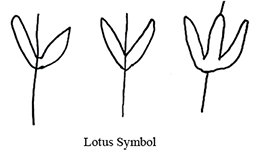
If you are new to palmistry, I should offer a warning. Finding and locating symbols on a palm can be hard work for a beginner. A good deal of training and practise is needed before a student can claim to have found a rare sign on a strangers palm. Also, interpreting a symbol should not be done without looking at the other lines on the palm. It is wiser to think of these signs as actions from the past that will give their results in the future. Deciding when that future event will take place should be determined by the major and minor lines on the hand. For example, you may see a lotus symbol on a persons hand and interpret that to mean that that person will lead a financially comfortable life (as described later in this book). However, that person may be in financial difficulty at the time that you read their hands. It is wiser to inspect the Saturn and Sun lines to determine when that comfort will be activated before making your comments. In other words, do not rush to conclusions and make rash predictions based on a single symbol or even on a combination of them. Instead, study the entire palm and use these symbols as signals for an activation of energy at a particular point in time in a persons life.
Another trap that I expect many beginners to fall into, and one that I myself was guilty of when I first started learning palmistry, is to look at their own hands to find symbols and then exaggerate their meaning hoping for great things in the future. A few good signs do not mean that you will have a trouble-free future. I therefore advise you not to get too carried away by the presence of rare signs on your palm. Many schools of palmistry in India teach that you should not read for someone that you are emotionally attached to, including yourself. This is because you, the reader, become biased and easily miss other obvious signs. Therefore, by looking at your own hand, your interpretation of the lines on your hand will exaggerate the good or downplay the bad. In either case, you will not be in a position to correctly read and interpret these signs for yourself. If you find some rare symbols on your hand, acknowledge their existence but do not dwell on them.
On the other hand, pardon the pun, do not be discouraged if you do not find any symbols on your own palm. Some of the signs described in this book are very rare, and in my many years of reading palms, there are several signs that I have seen only a handful of times. Not having good symbols on your hand does not mean that you will not lead a good life. Do not lose heart if you do not have a particular symbol on your palms. Instead, put your focus, effort, and determination towards creating the life that you envisage for yourself; and once that is done, the appropriate symbol will grow on your palm in its own time. Remember, these symbols are a record of past actions. So you can perform some actions in the present time, such as harder work or more sustained study and practise, in order to create the symbols that you want to appear on your hand in the future.
As you practise this system, you will notice that there are symbols that will appear to be poorly formed on some hands, whilst that same symbol will be strong and prominent on another persons palm. If a sign is lightly formed with broken lines, or does not look like one of the pictures provided, then it will reduce the effect that the symbol will have. It will still give either a positive or negative result as defined for that sign in this book, but it will be of a lesser intensity. Other times, a sign will be so faint that it can only be seen with a bright light or under a magnifying glass. If this is the case, then that symbol is a sign which is growing on the persons hand. This sign may develop and become stronger over the next few years, gaining more importance as time goes by. It will only have more impact on the persons life if that sign grows stronger over time, but if it stays weak then this sign will give lesser results. It should not take too much practise to find the difference between a poorly formed sign (weak) and a correctly formed sign (strong).
The symbols described in this book can loosely be broken down into four categories: Shapes, Animals, Objects, and Planets. The rarity of the signs can be correlated according to this order. Almost everyone will have some type of Shape on their hand (Square, Cross, Circle). A few people will have Animals (Fish, Horse, Ox), and even fewer people will have Objects and Planets (Pot, Flag, Moon). This is because as each sign becomes more and more complex, it will become harder to find.
If you are new to palmistry then all of these information may be overwhelming for you in the beginning. To make the learning process easier, I have created in this book a specific format for each symbol. This is how a beginner can best make use of the content for each symbol.
Next page
